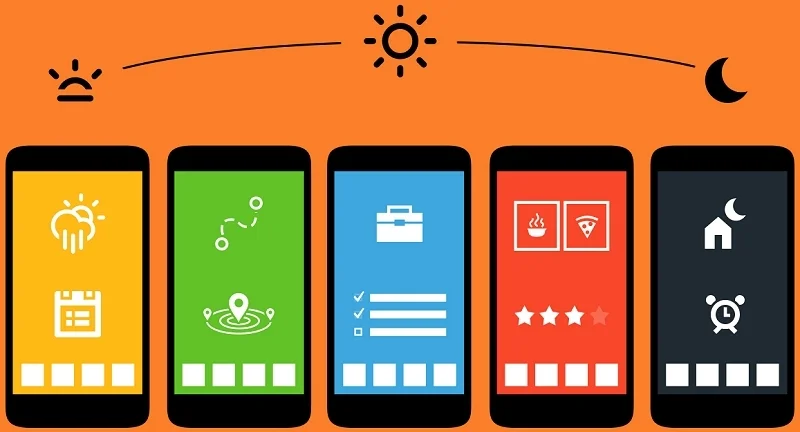We live in a world of enormous geopolitical and economic changes. In such an environment, it is difficult to reach and retain customers. This is why having an engaging mobile application is essential for your e-commerce business.
Unfortunately, not all online companies understand the importance of having an intuitive mobile application. A mobile application can help business owners reach their targeted audience easily and turn them into loyal customers.
People spend most of their time using their phones during the day. Take advantage of it and let them know more about your business through a state-of-the-art mobile application.
We have put together the most crucial strategies to help you enhance your mobile app.
Taking Advantage of Mobile-Specific Features
Mobile websites, as advanced as they are, still have limitations regarding various functionalities. Even though they are mobile responsive, they can consume a lot of phone resources and become slow. This is not the case with mobile applications. They are faster since they are entirely compatible with the phone’s hardware components.
A well-designed mobile app can perform multiple tasks faster than a mobile website. The main reason is the availability of various mobile-specific functionalities such as cameras, GPS, contact lists, or accelerometers. Software developers take advantage of all these features when building a mobile e-commerce app.
Implementing a Simple Interface
If users cannot find what they want quickly, they will leave your mobile application with just a few clicks. Therefore, ensure the first page of your e-commerce app is simple and clean. It most often decides whether a user will stay or leave. So, the main goal here is to make them stay.
Here are some tips on how to make an intuitive user interface:
- Graphics elements – Do not use colors that can be difficult for the eyes. Avoid intense background colors, making it difficult for users to read. For instance, strong red is not recommended for the background since it can make reading even impossible. Flashing or spinning graphics elements are also irritating to the eyes.
- Clear structure – Avoid cluttering when it comes to mobile application software development. Your company’s logo, navbar, and a short description of your products and services are usually enough. Too cluttered pages can confuse your visitors.
- Call-to-Action buttons – Users should be familiar with the next steps after landing on your main mobile page. In other words, you need to guide them through the app to achieve a specific goal. For example, buying products or services or subscribing to your newsletter can be the next move.
Improving the Speed
High-loading speed is extremely important. Nobody wants to wait for several seconds until the application is loaded. The best loading time is around two seconds. Everything above it can make your potential buyers visit a competitor’s application.
So, what can we do? As we said earlier, the main application interface should be simple. The main reason for keeping it simple is that it will load faster. The same goes for other pages.
Uncompressed photos and too much information can cause pages to load slowly. So, optimized images and graphic elements can help you eliminate this problem.
However, do not use the smallest size when compressing photos because you will lose their quality. Find the right balance.
Additionally, use splash loading screens. Such screens will not increase loading speed but will give the impression that the application is fast and responsive.
Enabling Navigation Options
Most users will visit your app to find specific information. They are even more likely to stick around if you provide them with intuitive search options.
To find a particular product or service, users should be able to narrow down their search results according to many criteria, such as popularity, price, or relevance. Additionally, you can include even more filters to help your customers find suitable products or services.
Optimizing Your Application
Having a great mobile app means nothing if people do not know about it. Thus, you must develop an SEO strategy before launching the app. Here are some interesting SEO tips:
- Distribution channels – Upload your application on the App Store and Google Play. The application’s title should contain 75 characters (App store) and 30 characters (Google Play). Additionally, include the app category, description, and mobile software development company that you need to outsource for similar projects. When considering outsourcing software development, it’s important to carefully evaluate the app category and description to determine the necessary technical skills and experience required for the project.
- Description and keywords – The description needs to have relevant keywords. App Store descriptions should have up to 4000 characters. On the other hand, you should use short descriptions when it comes to Google Play.
- Links – Let your users know that you have developed a new mobile application. For instance, place a link on your website, which can lead them to the app’s download page. Social networks are also excellent for informing people about your products and services.
- Regular updates – This is called freshness and refers to how often the application is updated. Users appreciate keeping the app up to date regarding performance and security.
Conclusion
Whether you have decided to enhance an existing one or launch a new app, here are the most important principles to follow:
- Take advantage of already available mobile resources
- Create a simple and easy-to-use interface
- Increase the loading speed by compressing graphics elements
- Improve user experience by using CTA buttons and search filters
- Update the mobile application regularly
In the last few years, the number of global mobile app users has overtaken the number of desktop users. Today, that gap is growing in favor of users accessing the Internet via mobile applications. Therefore, besides an e-commerce website, having a mobile app is a must.

